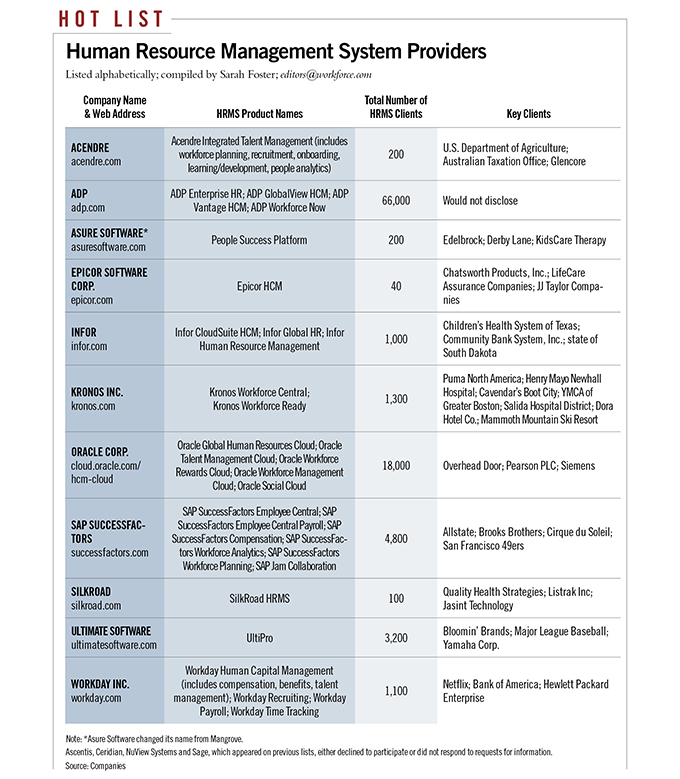Forget software as a service; human capital as a service is the hottest trend in staffing today, with a vast segment of the workforce choosing work-on-demand options over full-time employment.
“It is the economy of the human cloud,” said Barry Asin, president of Staffing Industry Analysts, a global advisory service in Mountain View, California.
Asin isn’t just talking about Uber and Lyft drivers, though they are a part of this trend. The human cloud is also full of contractors, consultants, freelancers and subject matter experts who are seeking new models of employment for a variety of reasons. Some do it to bolster their traditional income with after-hours gigs, while others do it full time because they can earn more money or achieve greater control over their work life. Still, many contractors find themselves in these roles because it’s the best option they have, especially as companies begin to see the value of bolstering their full-time workforce with contract staff.
Regardless of the reason, their ranks are growing. Contingent workers make up 53 million people, or 34 percent of the American workforce according to a survey commissioned by Freelancers Union and Elance-oDesk. And as more professionals flock to contract positions, staffing industry companies are expanding their offerings to better meet the needs of clients.
Online Platforms Fill the Gap
Responding to this shift, many traditional staffing agencies are building or partnering with online platforms that specifically link companies with contractors to manage and complete contingent work arrangements. This area of the staffing industry has grown rapidly in recently years, with dozens of sites now available, including upwork.com, freelancer.com, and Proworkers, as well as many industry-specific and specialty sites, such as UpCounsel for lawyers, Toptal for software developers and ShiftPixy for hospitality industry shift workers.
“The migration of this niche part of the industry to the internet has made it much easier for contingent workers to participate in the gig economy,” said Teresa Carroll, senior vice president of talent solutions for KellyOCG, the outsourcing and consulting group of Kelly Services in Troy, Michigan. It has also enabled more workers to make the transition from full-time to freelance.
These online matching sites are still a small trend in the broader staffing economy, but the trend is growing. According to Staffing Industry Analysts data, 4 percent of Fortune 1000 companies used online platforms to hire contingent labor in 2014, but that rose to 11 percent in 2015 with another 5 percent considering the tools within the next two years.
to hire contingent labor in 2014, but that rose to 11 percent in 2015 with another 5 percent considering the tools within the next two years.
The most innovative staffing firms see this growing trend as an opportunity to find new ways to bring talent to their clients. For KellyOCG, that means partnering with a dozen online communities, including Upwork, Work Market, and most recently Elevate Direct in the U.K. Other staffing companies are acquiring innovative online start-ups to fill their contract labor gaps. Earlier this year Monster acquired the San Francisco based start-up Jobr, which offers a job-finding app that the company described as “Tinder for jobs”; ManpowerGroup acquired Ciber Inc., the Dutch IT solutions and staffing provider, to improve its global IT staffing capabilities; and Randstad acquired twago, a European freelance marketplace where companies can create client-branded freelance recruitment platforms that can be integrated with their vendor management system.
Legal Concerns Drive Caution
Staffing firms are also working more closely with clients in an advisory role to help them figure out how to best take advantage of contingent labor trends, and to make sure their choices align with business and legal goals. “Companies have all sorts of questions and concerns about compliance risk when using these platforms,” Asin said, noting that larger companies are especially cautious about working with contractors, and are turning to staffing firms for guidance.
It’s a smart move, especially as policymakers begin to explore what the gig economy means from a legal and economic standpoint, and how they may adapt statutes to create a social safety net for these workers, said Richard Wahlquist, CEO of the American Staffing Association. In a recent ASA survey, one of the leading issues keeping executives up at night is their concern about labor employment law and where their liability begins and ends when working with staffing firms. “People have a lot of questions about their legal obligations to temp workers,” he said. And as they introduce more temporary and project labor into their workplace, they increase the risk of introducing non-compliant practices into the organization.
It isn’t always easy to decipher obligation, he said. For example, with the Affordable Care Act, the staffing firm is responsible for handling all employee insurance issues, but for laws related to Occupational Safety and Health Administration requirements and equal opportunity hiring, the client is responsible for providing a safe work environment that is free from discrimination.
“These rules all extend to a flexible labor force and you have to be aware of your obligation to these workers,” Wahlquist said. The Department of Labor is paying closer attention to compliance issues related to temp workers and recently released a series of guidance documents as part of its Temporary Worker Initiative, specifically focused on compliance with safety and health requirements when temporary workers are employed under the joint (or dual) employment of a staffing agency and a host employer.
“I think the majority of noncompliance that we see is people just not getting what the law is, and what their responsibilities are under it,” Department of Labor Wage and Hour Division Administrator David Weil said in an interview with The Washington Post. “We also find cases of people who are clearly playing games and clearly trying to shift out responsibility, and often have structured things in a way that lead toward more noncompliance.”
 When companies fail to meet the needs of these contract workers it can backfire. In May of this year, for example, OSHA cited Cooper University Hospital in Camden, New Jersey, for failing to fit temporary workers with proper respirators or provide training on protocols related to exposures to blood and other potentially infectious materials. The hospital faces $55,000 in penalties.
When companies fail to meet the needs of these contract workers it can backfire. In May of this year, for example, OSHA cited Cooper University Hospital in Camden, New Jersey, for failing to fit temporary workers with proper respirators or provide training on protocols related to exposures to blood and other potentially infectious materials. The hospital faces $55,000 in penalties.
Concerns about legal issues link to a broader shift in the staffing industry where larger companies are looking to their vendors for more than just workers. “They want advice and analytics that will help them better manage their overall talent equation,” said Carroll. This demand for consulting services is being driven by a number of trends, including interest in using more contingent labor, internal pressures to reduce the time and cost of hiring, and the inability of big companies to keep up with technology innovations used to find and track talent. “They realize they can’t be the best at everything, so they are turning to service providers to fill the gaps,” she said.
In response, staffing firms are working with clients much earlier in their decision-making process. In some cases, they are working with clients months in advance of a project to determine what types of talent they need, whether those hires should be full time or temporary, and how to manage the compliance issues related to these decisions, said Paul McDonald, senior executive director for Robert Half International in Los Angeles. “They want us involved in these conversations from the planning stage to advise them on what choices will help them execute their plan.”
Many firms are also expanding their data mining and workforce analytics offerings to give companies greater insight into which types of talent deliver the greatest benefits for different types of projects or positions, and how to attract this talent to their brand. Some staffing companies are building out these services from within, while others are acquiring analytics expertise. For example, Protiviti Inc., Robert Half International’s consulting division, recently acquired the assets of Decision First Technologies, a business intelligence and SAP solutions provider.
Supply Still the Biggest Challenge
For all the hoopla around gig workers, most staffing agencies continue to say their biggest challenge is finding qualified talent to fill their pipeline. “The impact of the skill gap and declining labor force is a constant burden for recruiters trying to fill talent needs, whether they are in-house recruiters or outside firms,” Wahlquist said.
McDonald agrees. He noted that while overall unemployment is at a comfortable 4.7 percent rate, specific professional sectors, including finance, tech, legal and accounting are much lower. “For certain IT roles the unemployment rates are less than 1 percent,” he said. “Demand is dramatically outstripping supply.” Even though enrollment in engineering and related fields is rising, McDonald doesn’t expect to see much relief in the years to come. “The pace of technology and demand for talent is moving faster than these programs can deliver graduates.”
In response, companies like Robert Half are trying to ramp up the recruiting side of their services, and developing mobile applications that enable swift — but vetted — matches between candidates and clients. “Speed is critical in this field, though you can’t skip the thoroughness of the review process. That’s where misfires happen.”
The need for speed won’t go away any time soon, and staffing firms will continue to face pressures to expand their reach and make it easier for talented laborers to find work through their recruiting services and online platforms. That means offering transparent and efficient tools, like mobile sign up and interviews via Skype to make the process speedy and efficient, McDonald said. “It has to be quick and easy for candidates and clients, or they will go elsewhere.”
Sarah Fister Gale is a writer based in the Chicago area. Comment below or email editors@workforce.com.









